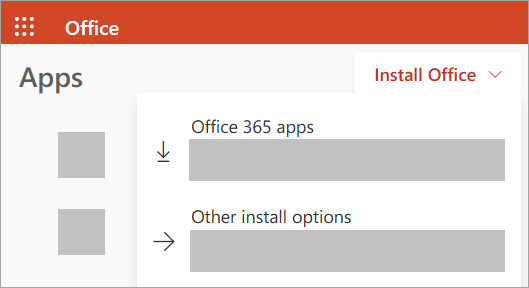

- #Microsoft office packages for download how to#
- #Microsoft office packages for download .exe#
- #Microsoft office packages for download windows 10#
- #Microsoft office packages for download download#

#Microsoft office packages for download .exe#
exe file and extract its features into the desired location. Important You must use the Office 2016 Deployment Tool to create Office 2016 App-V Packages.Ģ.
#Microsoft office packages for download download#

Office 2016 App-V Packages are created using the Office Deployment Tool, which generates an Office 2016 App-V Package.
#Microsoft office packages for download windows 10#
Once created, the Office 2016 App-V package will run on 32-bit and 64-bit Windows 7, Windows 8.1, and Windows 10 computers.
#Microsoft office packages for download how to#
The following instructions explain how to create an Office 2016 App-V package with Subscription Licensing.Ĭreate Office 2016 App-V packages on 64-bit Windows computers. You create Office 2016 App-V packages by using the Office Deployment Tool. Create Office 2016 App-V Packages Using Office Deployment Tool Note In this topic, the term “Office 2016 App-V package” refers to subscription licensing. The computer on which you are installing the Office Deployment Tool must have: Prerequisite Review prerequisites for using the Office Deployment Tool You cannot use the Sequencer to create packages. Important In App-V 5.0 and later, you must use the Office Deployment Tool to create a package. This file contains the default package settings for all users on a computer that is running the App-V Client.įor more information, see Disabling Office 2016 applications.Ĭomplete the following steps to create an Office 2016 package for App-V 5.0 or later. Modify the DeploymentConfig.xml file after the package has been created. For example, you can use this setting to create a package that contains only Microsoft Word.įor more information, see ExcludeApp element. Use the ExcludeApp setting when you create the package by using the Office Deployment Tool.Įnables you to exclude specific Office applications from the package when the Office Deployment Tool creates the package. The following table describes the recommended methods for excluding specific Office applications from a package. You must enable shared computer activation.Įxcluding Office applications from a package You cannot publish to the user.ĭeploying any of the following products to a shared computer, for example, by using Remote Desktop Services: You must publish the Office package globally.

You can publish only one Office package to each client computer. For more information, see Deploying Visio 2016 and Project 2016 with Office. If you are deploying Microsoft Visio 2016 and Microsoft Project 2016 along with Office, you must include them in the same package with Office. In App-V 5.0 and later, you must use the Office Deployment Tool to create packages. TaskĪll of the Office applications that you want to deploy to users must be in a single package. Packaging, publishing, and deployment requirementsīefore you deploy Office by using App-V, review the following requirements. Planning for Using App-V with coexisting versions of OfficeĬonsiderations for installing different versions of Office on the same computer Supported deployment types (for example, desktop, personal Virtual Desktop Infrastructure (VDI), pooled VDI) Use the following table to get information about supported versions of Office and about running coexisting versions of Office. Supported Office versions and Office coexistence Publishing the Office package for App-V 5.0Ĭustomizing and managing Office App-V packagesīefore you deploy Office 2016 by using App-V, review the following planning information. This topic contains the following sections:Ĭreating an Office 2016 package for App-V with the Office Deployment Tool For information about using App-V to deliver Office 2010, see Deploying Microsoft Office 2010 by Using App-V. For information about using App-V to deliver Office 2013, see Deploying Microsoft Office 2013 by Using App-V. Use the information in this article to use Microsoft Application Virtualization 5.0, or later versions, to deliver Microsoft Office 2016 as a virtualized application to computers in your organization.


 0 kommentar(er)
0 kommentar(er)
